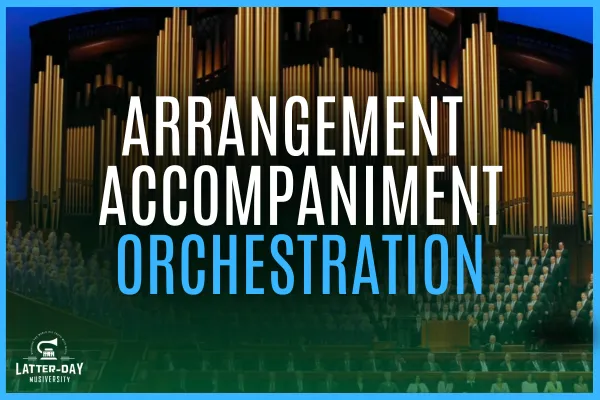
Arrangement Accompaniment Orchestration
Today, we continue to discover excellent arrangement techniques from the choral version of "Behold the Wounds in Jesus' Hands."
Yesterday, we looked at a warm-fuzzy chord exchange.
Today, let's learn a little about accompaniment orchestration, especially with the organ.
There's a good reason so many churches have organs.
And it's not just to look cool.
And it's not just in our church.
Yes, the organ is an instrument that can rouse the singing of the congregation.
But it's also a fabulous accompaniment instrument for a choir.
One of the reasons it works so well is because, like the choir, it is a wind instrument.
Wind literally blows through the pipes to create sound (or it is sampled electronically to produce the same type of sound).
In other words, it is an instrument built on the principle of sustain.
The piano, on the other hand, is a percussion instrument.
When your finger falls on a key, the hammer strikes the string... like a mallet hitting a cymbal.
It is NOT a "sustain" type of instrument.
Quite the opposite.
There are many ways of writing for the piano that transform it into something that can create the illusion of sustain.
But we'll save those for another day.
Because the organ is mainly a sustain instrument, you don't have to write difficult music to make it sound good.
To make a piano have the illusion of sustain, you have to sometimes get pretty fancy... which can be quite challenging at the best of times.
In the opening verse of the choral "Behold the Wounds," there is a great example of GREAT simplicity that yields wonderful results.
Actually, we'll look at 2 examples.
You can follow along in the recording below, at the time stamps listed.
(Example 1 @ 0:18)
(Example 2 @ 0:51)
Example 1 is right at the start of the opening verse, where the men sing in unison.
Look how simple the organ part is.
The pedal holds one note for 4 bars.
And each hand plays only 1 note at a time.
And in simple quarter notes (for the most part).
Try playing that on the piano.
Hear how thin and anemic it is?
Whereas, on the organ, the sustain created by this VERY simple keyboard writing works wonders.
We get 3 distinct sustained voices... as if each voice was a section of strings in an orchestra (and strings are another type of instrument that are built on the principle of sustain).
Another reason it works so well is because of how the moving notes in the hands work together with the notes of the melody.
Take a look at the red chord names below.
These chords are created by a combination of the vocal melody and the moving parts in the hands of the organ.
Not only do these moving voices present 3 melodic lines working together (the definition of polyphony)...
But they also create full chords that float atop the pedal D.
So simple.
So sustained.
So beautiful and easy to write.
Example 2 comes a few bars later when the men begin singing the 2nd half of the opening verse.
As the tune reaches this high point, it's only natural to want the organ to expand upon itself.
But it doesn't take much.
Notice, we still have the same 3 voices going (marked in yellow and green highlights).
The pedal, now moving by step, descends below all to add foundation to the tune.
And the right hand continues the same kind of profile as we saw in example 1.
The expansion comes in the left hand.
Instead of just presenting longer chords with simple moving eighth notes...
The left hand adds rhythmic filler by arpeggiating chords.
But it's still just 1 note at a time in the left hand.
Pretty simple writing that yields wonderful texture, thanks again to the sustaining nature of the organ.
So, what started super simple can easily be expanded upon and achieve an accompanimental climax of texture to fill out the verse.
Creating this kind of effect on the piano is a whole other ballgame.
So, the moral of the story is...
Don't be afraid to write for the organ when writing for your ward choir.
It doesn't have to be complicated music.
Especially in slower, more introspective pieces.
Loud pieces?
Well, that adds some layers of complexity, which we can discuss another time.
These are some of the things we will elaborate on during the upcoming 14-Day Hymn Arrangement Challenge.
If you'd like to make sure you don't miss the extra goodies and special deals available when the challenge is ready...
Click below and put your name down on the waiting list.
https://latterdaymusiversity.kit.com/challenge-wait-list
Tomorrow, we'll look at a wonderful way to connect one verse to the next that is far too rare in our tradition.
More soon.
Doug "don't be afraid of the organ" Pew